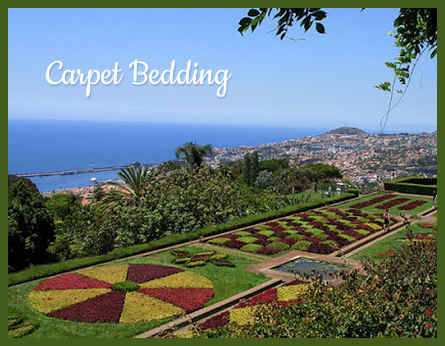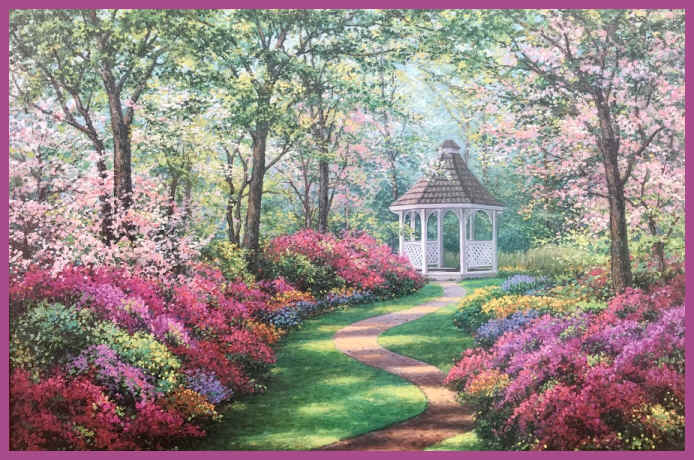 |
||||||
| Designers:
Jonathan Denby and Philippa Pearson The Victorian era came to be known
as one of the greatest ages of gardening.
The gardens behind the home were more laid-back and free-flowering ornate, and more suited to relaxing and for entertaining friends, paramours, and family privately. It was a place for courting couples to take a romantic stroll and profess their undying love. Or sit and converse or read a book on beautiful stone benches. Many of the flower beds were reminiscent of cottage gardens, and victorians loved planting plants with meanings, and big roses in beds, on archways and fancy trellises. Those well-to-do gardeners had conservatories, orangeries, fancy greenhouses and summerhouses built in their big backyards. Gardens further from the house were of a ‘country’ style that was casual and more natural.
The gardens were glorious, and mostly due to the fact that most folks who were well-to-do didn't do the back-breaking work that was sometimes involved. They had their live-in Gardeners do it. The lady of the house sometimes took charge and did a bit of rose pruning, but rarely got dirt on her hands or dress. Mostly picking flowers to decorate the home, but some ladies adored their gardens and supervised the plants planted in it, and the care of them. She would sometimes be seen kneeling in a flower bed doing minor weeding or new planting, wearing a big, gorgeous sunhat to avoid the sun touching her head or pearly white skin. No decent woman of wealth and position would be seen with a tan. It was considered gauche and common to have a sunkissed face. Those who insisted on strictly designed formal gardens usually had the means to own a separate summer cottage in the country or near the sea, and that is where they let loose with a cottage garden filled with wildflowers and unruly favorites, surrounded by fountains and benches. Those were the most beautiful gardens, minus the strict must-have plants and design. The formal gardens were insisted upon in socially acceptable Victorian gardens.
Big, flowery, free-flowering plants and flowers were considered country cottagey and for lower classes of countryfolk. But when unfettered by social convention, the Victorians had an eye for the stunning visual of a country garden, and many convalescents spent their days in that type of garden with their dogs, a pot of tea, and a book of soothing poetry. Children loved those gardens, loved to play there, have tea parties, and participated in the growing and picking of things.
The Gardens Carpet Bedding Herbaceous Borders This style of border grew short plants along the edge, and gradually gained height with the tallest plants growing in the back. So that each flower could be appreciated on it's own. Mixing colors, textures and heights added dimension to the flowerbed. More along the lines of present day gardens. Vines Ornamental vines were used to create shaded private areas for resting, evening romance, and reading on warm summer days. Clematis, Wisteria or Trumpet vine climbed over garden structures creating a flower bower. Vines were trained to grow along unsightly fences and to hide tree stumps or other imperfect elements of the Victorian backyard. A trellis or arbor at the gate allowed a climbing rose to frame the home. Shrubs Popular shrubs to use in a Victorian garden are: Vibernum, Bridal Wreath Spirea, Mock Orange, Forsythia, Quince, Boxwood hedges, and Clove Bush. The frilly flowering shrubs,, like peonies and hydrangeas were enjoyed by Victorians in the landscape and as a way to enhance the fences. The Victorian garden was also very fragranced and romantic. Decorations and Structures Known for their uber-flamboyance, Victorians took great pleasure in decorating their gardens. Almost always over-the-top. Less was never, ever, more. You were judged by your stuff and how much you spent to acquire it. And you displayed it as ostentatiously as possible. The Victorian Folly This eccentric and opulent 19th century craze saw everything from giant pineapples to faux-classical ruined temples constructed for the sole purposes of showing off, and providing employment for local artists. They really had no purpose at all. That's why they were called follies. These featured everything from Roman temples, ruined Gothic abbeys, to Egyptian pyramids. Other follies represented exotic Chinese pagodas, Japanese bridges, and large Aabian tents. Follies were an important decoative feature of the English garden. Ornamentation sources: Wikipedia |
|
Quick Links |
|
eyecandee.com
|








